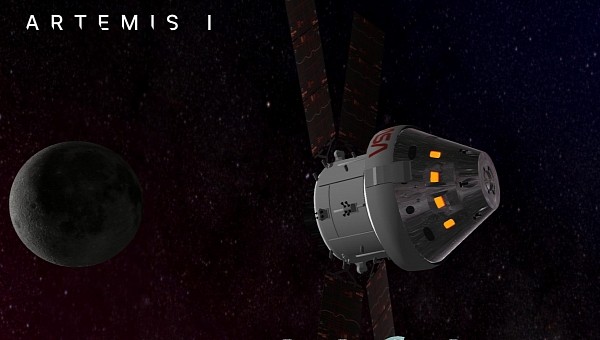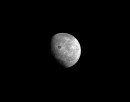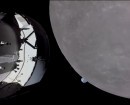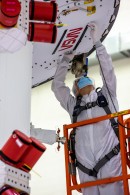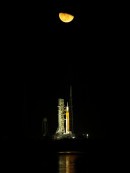Today is a special day in the Artemis I mission. NASA's Orion spacecraft successfully completed its first flyby of the Moon, passing just 81 miles (130 km) above the lunar surface. This is the first maneuver out of two meant to put Orion on "a distant retrograde orbit around the Moon."
NASA set the Artemis I Moon program into motion last week. On November 16th, the massive Space Launch System (SLS) rocket lifted off from Launch Complex 39B, launching an uncrewed Orion on a 26-mission around our natural satellite.
So far, everything is going according to plan. On day six of its journey, the spacecraft completed a key maneuver: Orion successfully performed what NASA calls the "outbound powered flyby burn." On November 21st, at 7:44 a.m. EST, flight controllers fired the orbital maneuvering system engine in order to accelerate the spacecraft and steer it toward a distant retrograde orbit (DRO).
As expected, NASA's Deep Space Network briefly lost contact with Orion as it went behind the Moon. However, after completing the flyby, the spacecraft once again acquired signal with Earth. Orion was 328 miles above the Moon at the time of the burn, traveling at a speed of 5,023 mph (8,804 kph). Shortly after, it flew roughly 81 miles (130 km) above the surface.
The next key maneuver will take place on Friday, November 25th. In just a few days, the capsule will perform a second propulsive burn to enter DRO, where it will spend about a week collecting data and helping scientists learn more about how a spacecraft performs in a deep space environment. On Monday, November 28th, Orion will be at its farthest point, more than 268,500 miles (432,109 km) away from Earth.
Orion's journey will then continue with the goal of returning back to Earth. On December 11th, the spacecraft is expected to arrive back home with a splashdown in the Pacific Ocean. If everything goes according to plan, the mission will be followed by Artemis II in 2024. The next Artemis mission will take everything a step further, including a crewed Orion that's expected to send astronauts farther from Earth than ever before – at around 10,000 miles (16,093 km) beyond the Moon.
So far, everything is going according to plan. On day six of its journey, the spacecraft completed a key maneuver: Orion successfully performed what NASA calls the "outbound powered flyby burn." On November 21st, at 7:44 a.m. EST, flight controllers fired the orbital maneuvering system engine in order to accelerate the spacecraft and steer it toward a distant retrograde orbit (DRO).
As expected, NASA's Deep Space Network briefly lost contact with Orion as it went behind the Moon. However, after completing the flyby, the spacecraft once again acquired signal with Earth. Orion was 328 miles above the Moon at the time of the burn, traveling at a speed of 5,023 mph (8,804 kph). Shortly after, it flew roughly 81 miles (130 km) above the surface.
The next key maneuver will take place on Friday, November 25th. In just a few days, the capsule will perform a second propulsive burn to enter DRO, where it will spend about a week collecting data and helping scientists learn more about how a spacecraft performs in a deep space environment. On Monday, November 28th, Orion will be at its farthest point, more than 268,500 miles (432,109 km) away from Earth.
Orion's journey will then continue with the goal of returning back to Earth. On December 11th, the spacecraft is expected to arrive back home with a splashdown in the Pacific Ocean. If everything goes according to plan, the mission will be followed by Artemis II in 2024. The next Artemis mission will take everything a step further, including a crewed Orion that's expected to send astronauts farther from Earth than ever before – at around 10,000 miles (16,093 km) beyond the Moon.
The @NASA_Orion spacecraft captured this image of the Moon during its sixth day of flight, as it approached its first outbound powered flyby of the #Artemis I mission and its closest lunar approach. https://t.co/Wt4DrDpbK3 pic.twitter.com/GPILcbPYq7
— NASA Artemis (@NASAArtemis) November 21, 2022
